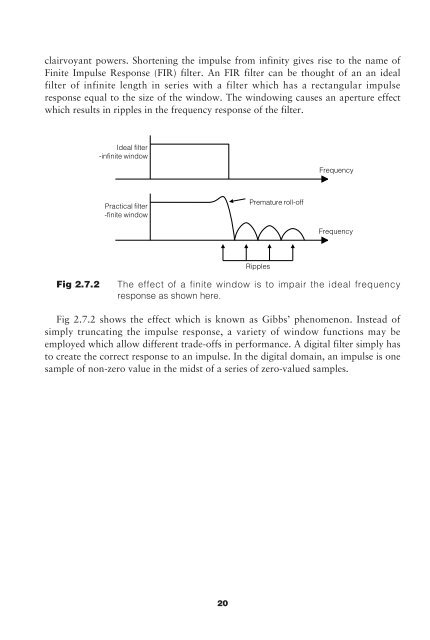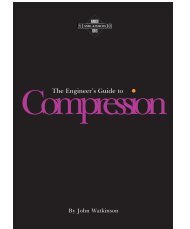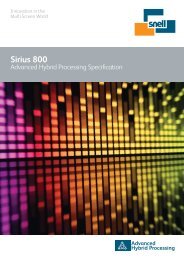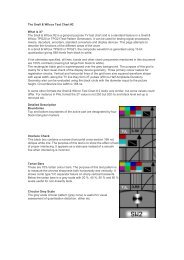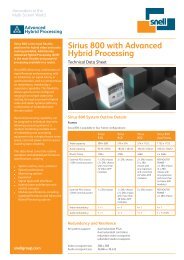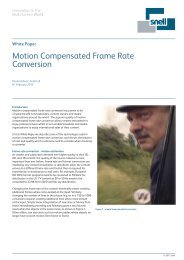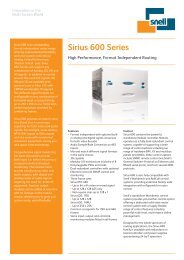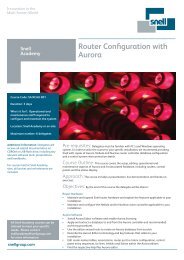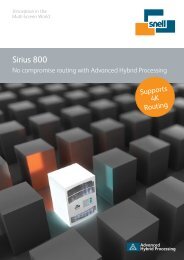The Engineer's Guide to Standards Conversion - Snell
The Engineer's Guide to Standards Conversion - Snell
The Engineer's Guide to Standards Conversion - Snell
Create successful ePaper yourself
Turn your PDF publications into a flip-book with our unique Google optimized e-Paper software.
clairvoyant powers. Shortening the impulse from infinity gives rise <strong>to</strong> the name of<br />
Finite Impulse Response (FIR) filter. An FIR filter can be thought of an an ideal<br />
filter of infinite length in series with a filter which has a rectangular impulse<br />
response equal <strong>to</strong> the size of the window. <strong>The</strong> windowing causes an aperture effect<br />
which results in ripples in the frequency response of the filter.<br />
Ideal filter<br />
-infinite window<br />
Frequency<br />
Practical filter<br />
-finite window<br />
Premature roll-off<br />
Frequency<br />
Ripples<br />
Fig 2.7.2<br />
<strong>The</strong> effect of a finite window is <strong>to</strong> impair the ideal frequency<br />
response as shown here.<br />
Fig 2.7.2 shows the effect which is known as Gibbs’ phenomenon. Instead of<br />
simply truncating the impulse response, a variety of window functions may be<br />
employed which allow different trade-offs in performance. A digital filter simply has<br />
<strong>to</strong> create the correct response <strong>to</strong> an impulse. In the digital domain, an impulse is one<br />
sample of non-zero value in the midst of a series of zero-valued samples.<br />
20


